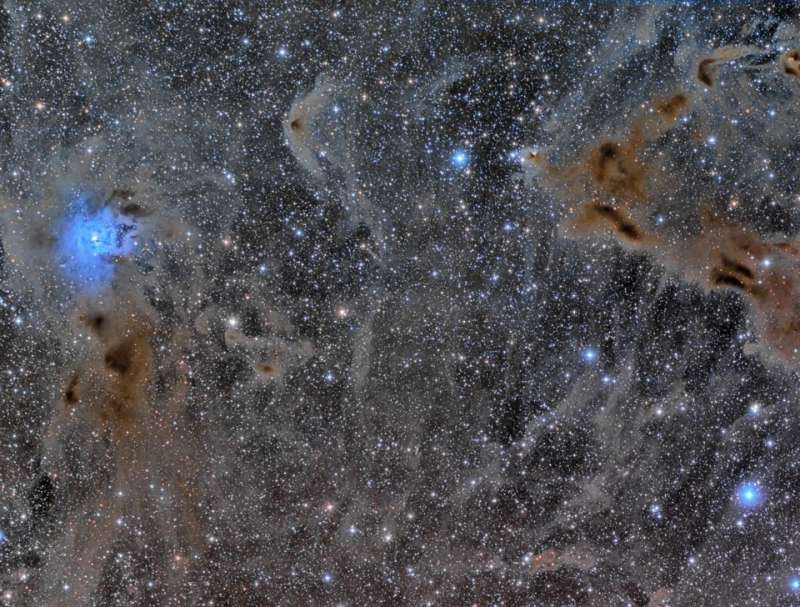Credit & Copyright: Mikel MartМnez
Explanation:
What flowers in this field of dark star dust?
The Iris Nebula.
The striking blue color of the
Iris Nebula is created by light from the bright star
SAO 19158
reflecting off of a dense patch of normally
dark dust.
Not only is the star itself mostly blue, but blue light from the star is preferentially
reflected
by the dust -- the same affect that
makes Earth's sky blue.
The brown tint of the pervasive dust comes partly from
photoluminescence --
dust converting
ultraviolet radiation to
red light.
Cataloged as
NGC 7023, the
Iris Nebula is studied frequently because of the unusual prevalence there of
Polycyclic Aromatic Hydrocarbons
(PAHs), complex molecules that are also released on Earth during the incomplete combustion
of wood fires.
The bright blue portion of the
Iris Nebula spans about six light years.
The Iris Nebula,
pictured above, lies about 1300 light
years distant and
can be found
with a small telescope toward the constellation of
Cepheus.
1999 2000 2001 2002 2003 2004 2005 2006 2007 2008 2009 2010 2011 2012 2013 2014 2015 2016 2017 2018 2019 2020 2021 2022 2023 2024 2025 |
Январь Февраль Март Апрель Май Июнь Июль Август Сентябрь Октябрь Ноябрь Декабрь |
NASA Web Site Statements, Warnings, and Disclaimers
NASA Official: Jay Norris. Specific rights apply.
A service of: LHEA at NASA / GSFC
& Michigan Tech. U.
|
Публикации с ключевыми словами:
dust - reflection nebula
Публикации со словами: dust - reflection nebula | |
См. также:
Все публикации на ту же тему >> | |
